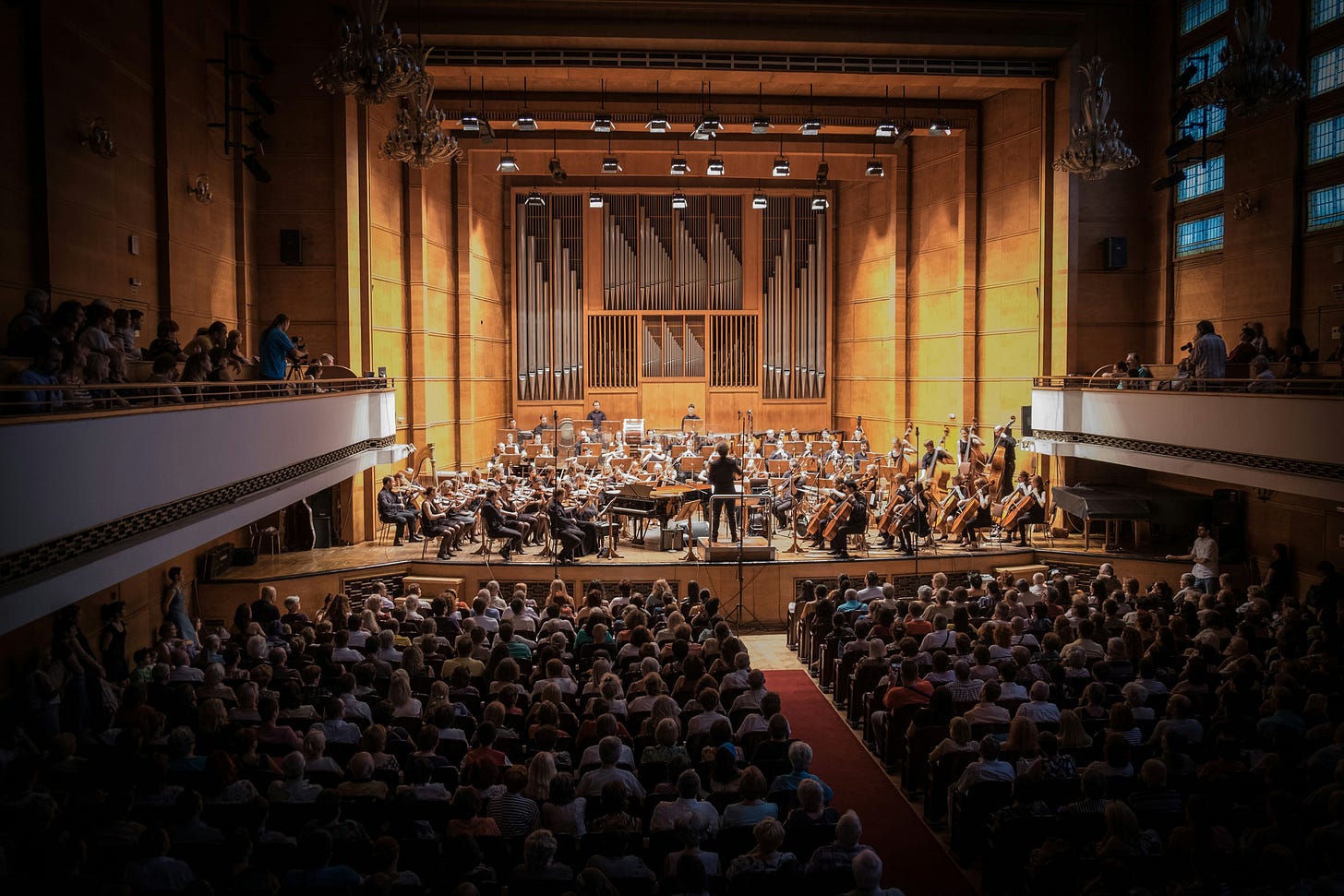The concertmaster makes a show of standing up and facing the orchestra. They nod to the oboe, the instrument designated because of its clear tone, and everyone falls silent. Depending on the size of the orchestra that night, the concertmaster signals a 2 or 3 with their fingers hidden from the audience, like a baseball catcher calling a play. Tonight the orchestra is large and fills the stage. To avoid too much sonic congestion, we’ll tune in three separate groups. The orchestra knows what to do.
In technical terms, the note that my symphony tunes to is called “A 440,” meaning that the sound waves make exactly 440 little warbles every second. In practice, the ritual of tuning is much less scientific. There is a trend among orchestras to move the note slightly higher and make the orchestra sound brighter. This pseudo-science means some venture up to A441, A442, or if you’re in a European orchestra, even A444. The difference is so subtle it’s virtually impossible to notice in isolation, but if you tuned to A440, and your neighbor to A444, the difference in pitch would sound as wide as the interstate.
The first oboe note rings out alone for about three seconds before anyone joins in, giving the oboist time to check it with an electric tuner they have on their stand. All of the wind instruments go first, matching their A before briefly flitting through a few notes as if reassuring themselves they still know where everything is. It’s a joyful cacophony. There’s a bit of shuffling as a bassoon or clarinet lengthens a tube or rotates a mouthpiece to better calibrate their instrument’s pitch. The truth is that all instruments can finger a note and then with just their mouth or bow wildly bend the pitch up or down. The process of tuning is about playing the most simple, relaxed note, with no force, and making the needed adjustments to align that with the standard A. It’s the best approximation to being “in tune” that we can manage. The second oboe call is for the brass instruments, and the third is for the strings. Each has a similar process of turning pegs and adjusting metal tubes.
We don’t really have that much time to tune on stage, and sure enough there’s often one or two string players frantically trying to tame a rebellious string long after everyone else has stopped playing. These unintended solos can be embarrassing but are unavoidable. Our instruments are sensitive to changes in temperature and humidity and while I’m sitting on the stage, my bass is still slowly catching up from the car ride to the hall. What was in tune 10 minutes ago might have drifted flat under the warm stage lights.
Tuning is at the same time mundane and grounding. We do it so often it can become rote and even hasty, but the ritual of getting everyone in sync, and sharing a single note before we begin a concert of thousands is a simple reminder that at the core what we’re doing is attempting to play one beautiful, clear and intentional note at a time.



